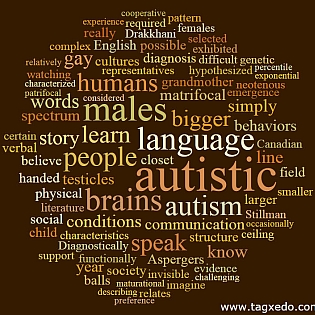 For all its charms, the weblog platform does also bury older content for no better reason than that newer material has come along. While we all like to feel we’re improving, whether you are writing blog posts, delivering babies, or making them yourself, you are likely not only as good or as interesting as your most recent effort. Neither are we.
For all its charms, the weblog platform does also bury older content for no better reason than that newer material has come along. While we all like to feel we’re improving, whether you are writing blog posts, delivering babies, or making them yourself, you are likely not only as good or as interesting as your most recent effort. Neither are we.
In remedy, the entries linked below are accompanied by brief summaries of their content, as it appeared here a year ago this week.
•
•
•
2009
Writer and teacher’s aide Nightstorm uses the challenges of diversity among languages to examine privilege, and to draw parallels between the characters she writes, the autists with whom she works, and the world at large.
This is the crux of language with autistic people and typicals. Why do we struggle with learning your language, your words, your culture—but act like learning ours is some great mystery. Though it can be challenging and enigmatic, it feels like only autists bother with crossing the vastly long, shaky bridge which is communication, while those on the far side are tapping their feet waiting for us to cross it.
Relationships between social structure, brain size, handedness, and testicle size are considered.
Consider that with the exponential increase in autistic children, we are seeing a resurgence of individuals with no communicative impairments that are close genetic relations to people with conditions characterized by extreme maturational delay or autism. Look for unusually articulate, big-brained, big-balled, non hierarchical, artistic, left-handed pattern manipulators.
Do those with Aspergers have bigger balls?
• Grandma, They’re Not Santa Claus!
… the most recent large-scale study puts the number of diagnosably autistic 8-year-olds to be also at one in a hundred.
So. If we represent this distribution by herding one-hundred 8-year-olds onto a football field, are we to assume that one of those kids, the 100% certifiably autistic one, ends up standing alone off to one end of the field, way down at one of the goal lines? Reasonable enough, according to the study. But are we to assume as well that all ninety-nine of the rest are standing shoulder-shoulder, ninety-nine yards away along the one-yard line, the as-close-to-not-at-all-autistic-as-it’s-humanly-possible-to-be line? And that midfield, all that space in between, is wide, wide open, empty? There’s not another soul in sight who’s even just a wee bit more than occasionally autistic? Really?
Mark Stairwalt on 10/11/10 in Art/Play/Myth, featured | No Comments | Read More

